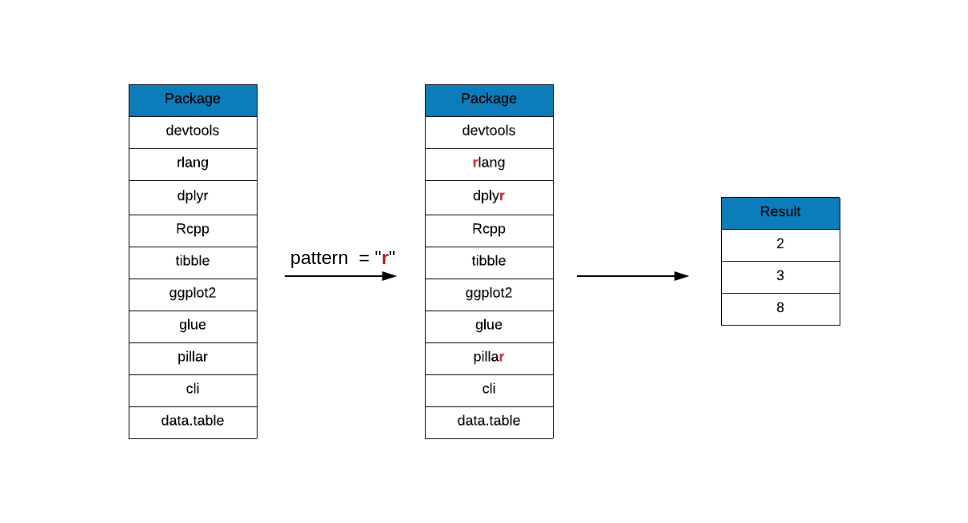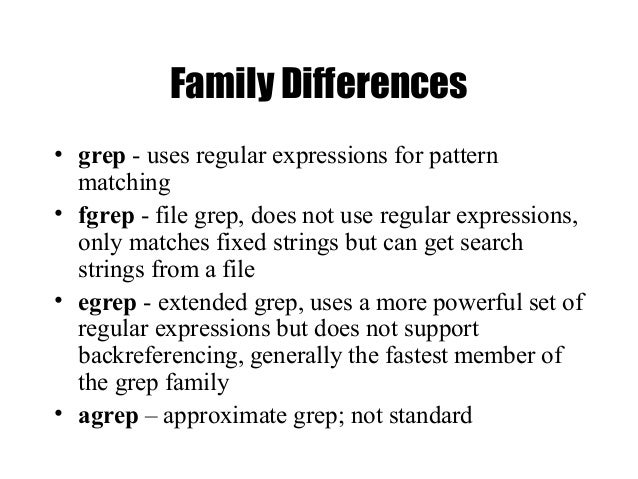


Where 3 is the number of the line in which the match is found. Produces the following output: 3:Nine for Mortal Men doomed to die This command: $ grep -n -i mortal lotr.txt When this option is used, the number of the lines where a match is found is included in the grep output. When using this option, only the match itself is printed: $ grep -o -i mortal lotr.txtĪnother interesting switch we can use is -n, short for -line-number. This behavior, however can be modified using the -o option, or its long version -only-matching. One important thing to notice, is that, by default, grep returns the entire line in which the match is found. This time the command produces the following output (the actual match is highlighted in red): Nine for Mortal Men doomed to die, To overcome this problem and perform a more “generic” search, we can use the -i option (short for -ignore-case, which makes grep ignore case distinctions: $ grep -i mortal lotr.txt The command above returns no matches, although the word “mortal” does appear in the text: this is because by default grep performs a search in case-sensitive mode, so, since the word “Mortal” is capitalized, it doesn’t match the pattern we provided. The grep syntax is very simple: we invoke the program providing the pattern to be matched as the first argument, and the target file as the second: $ grep mortal lotr.txt By default grep uses what it calls BRE or basic regular expressions: in this mode only some meta-characters (characters with a special meaning inside a regular expression) are available.Īs a first example we will try to use grep to match a very simple string, the word “mortal”. The Basic regular expression modeĪ regular expression is a pattern constructed following specific rules in order to match a string or multiple strings. Before we start explaining in what those variants are different from the original we must examine the default grep behavior when using regular expressions. These variants are actually deprecated, since they are the equivalent of running grep with the -E and -F options respectively.

In the introduction we spoke about two grep variants: egrep and fgrep. One Ring to bring them all, and in the darkness bind them, One Ring to rule them all, One Ring to find them, In the Land of Mordor where the Shadows lie. Seven for the Dwarf-lords in their halls of stone, We will put this really famous excerpt from the book “The Lord Of The Rings” on a file, and we will use as a target for our examples: Three Rings for the Elven-kings under the sky,
#Grep regular expression how to
In this tutorial we will see how to use it, and we will examine also its variants: egrep and fgrep. Grep is one of the most useful tools we can use when administering a unix-based machine: its job is to search for a given pattern inside one or more files and return existing matches.
/grep-ea33e54fc7ed425283d6bec7baa458b6.jpg)
You pass grep the string you want to search for as an argument, along with the filename ( GPL-3).After reading this tutorial you should be able to understand how the grep command works, and how to use it with basic and extended regular expressions. Run the grep command below to search through the downloaded configuration file and highlight ( -color=always) the string GNU.
#Grep regular expression license
Download the GNU General Public License as the example used in this tutorial to your working directory for an example configuration file.Ģ. Related: How to Use PowerShell’s Grep (Select-String)ġ. Luckily, the grep command lets you highlight strings you’re looking for. Manually finding a string in a configuration file is possible but can hurt your eyes trying to differentiate one string from another having the same text color.


 0 kommentar(er)
0 kommentar(er)
